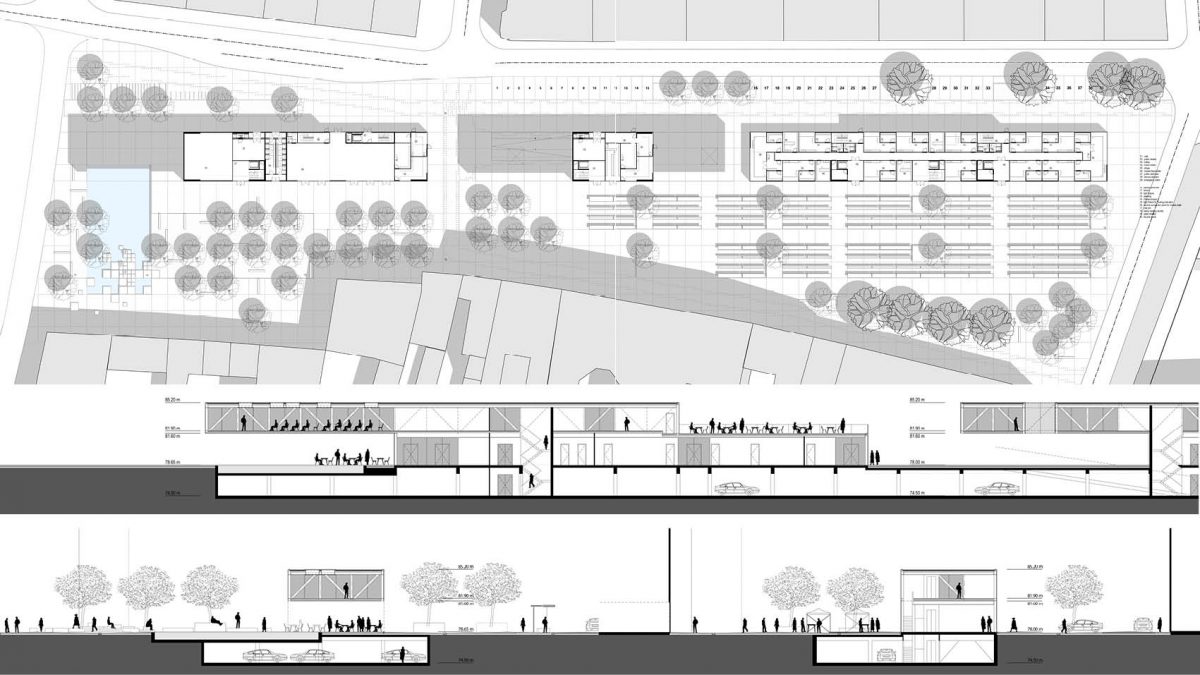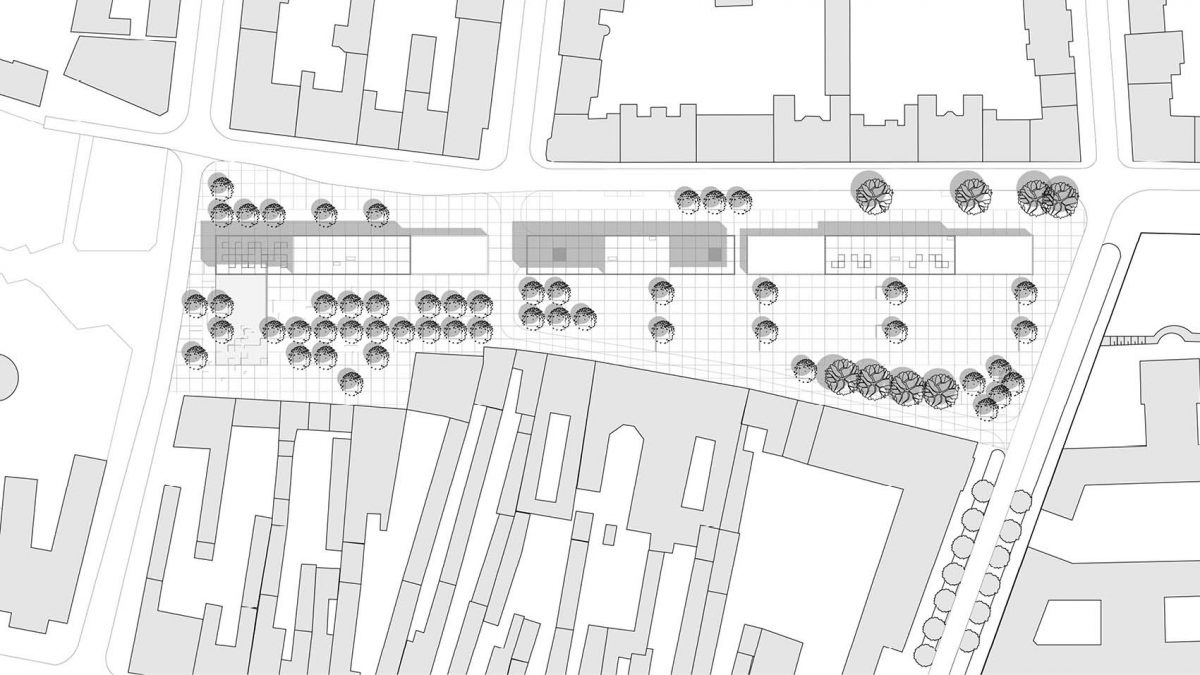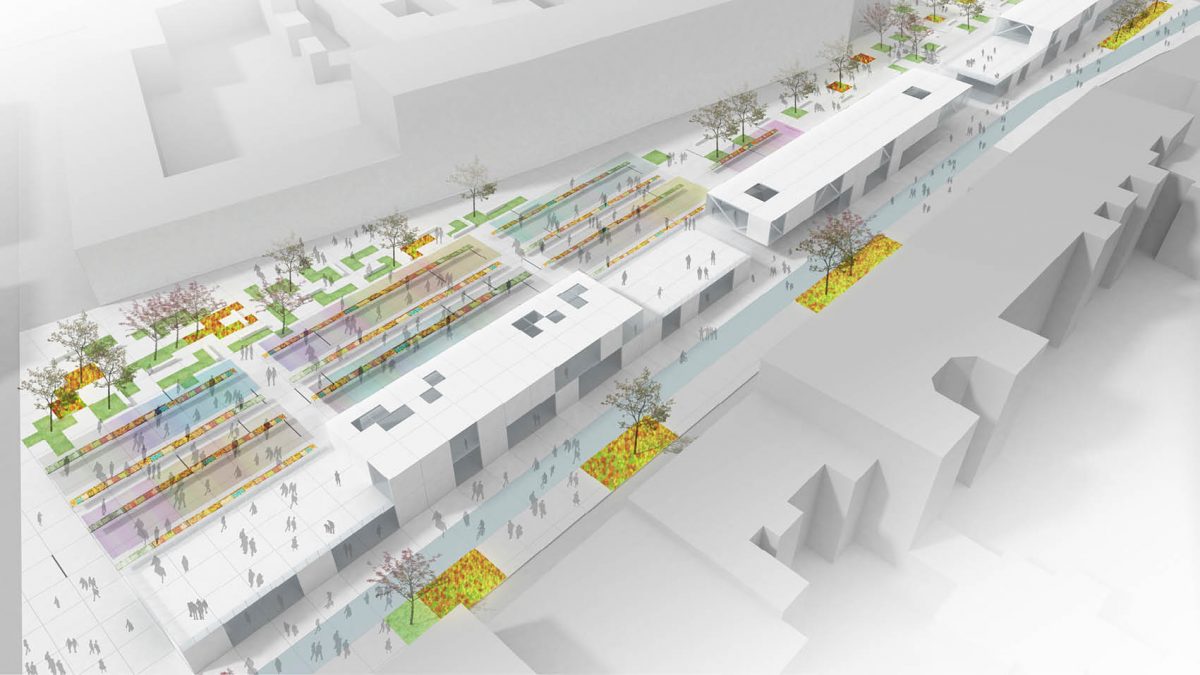Re-Public
Urban design and architecture for a city square
- Category
- Architecture, Urbanism
- Year
- 2009
- Location
- Novi Sad [SR]





- Size
- 2.0 ha
- Program
- Market building, public square, parking garage
- Client
- Land development agency of Novi Sad
- Collaboration
- JA Joubert Architecture
- Award
- Second prize in open competition
Republic square in Novi Sad is a missing piece in a sequence of connected public spaces that activate the very heart of the city’s center. A unique link between the heart of the city and the Danube river bank is currently covered with the under-performing and unattractive food market.
How to reinvent the square’s spatial qualities? How can it be more than just one individual project, but an integral part of the regeneration of Novi Sad? What can it add to it’s identity? To its collection of representative public spaces? What could be the role of the new market building?
It is precisely the need for synchronization between the two entities, new market building and the new square that is the central theme in our proposal. Within the context of the city’s limited resources for the interventions in the public space, showcasing functional and spatially sound harmony between commercial program and public realm could deem our proposal paradigmatic. It could become a model for the similar projects in the future.
The square today is a typical example of the leftover city space. Outcome of an ongoing collision between Austro-Hungarian urban heritage, central planning dogmas and new neo-liberal socioeconomic ambient. Further complicated by the intensive transitional processes, the square is a place where past and present lose chronological order.
Dominated by infrastructure, covered by numerous parked cars and buses and surrounded by a low quality urban fabric the spatial qualities of the square are hard to notice. Even a sheer demarcation of those qualities becomes a complex undertaking.
Simplicity of the proposal is a must. Minimalism becomes the ultimate means for avoiding that our proposal gets understood as a joke. Pavement and market buildings are our only tools. Chess figures that can be moved only ones. Surface of our plaza is simple and robust. Easy to maintain. Not only it rediscovers the hidden size of the square, it also enables multiple interpretation of urban space. An urban stage for immediate injection of identity.
